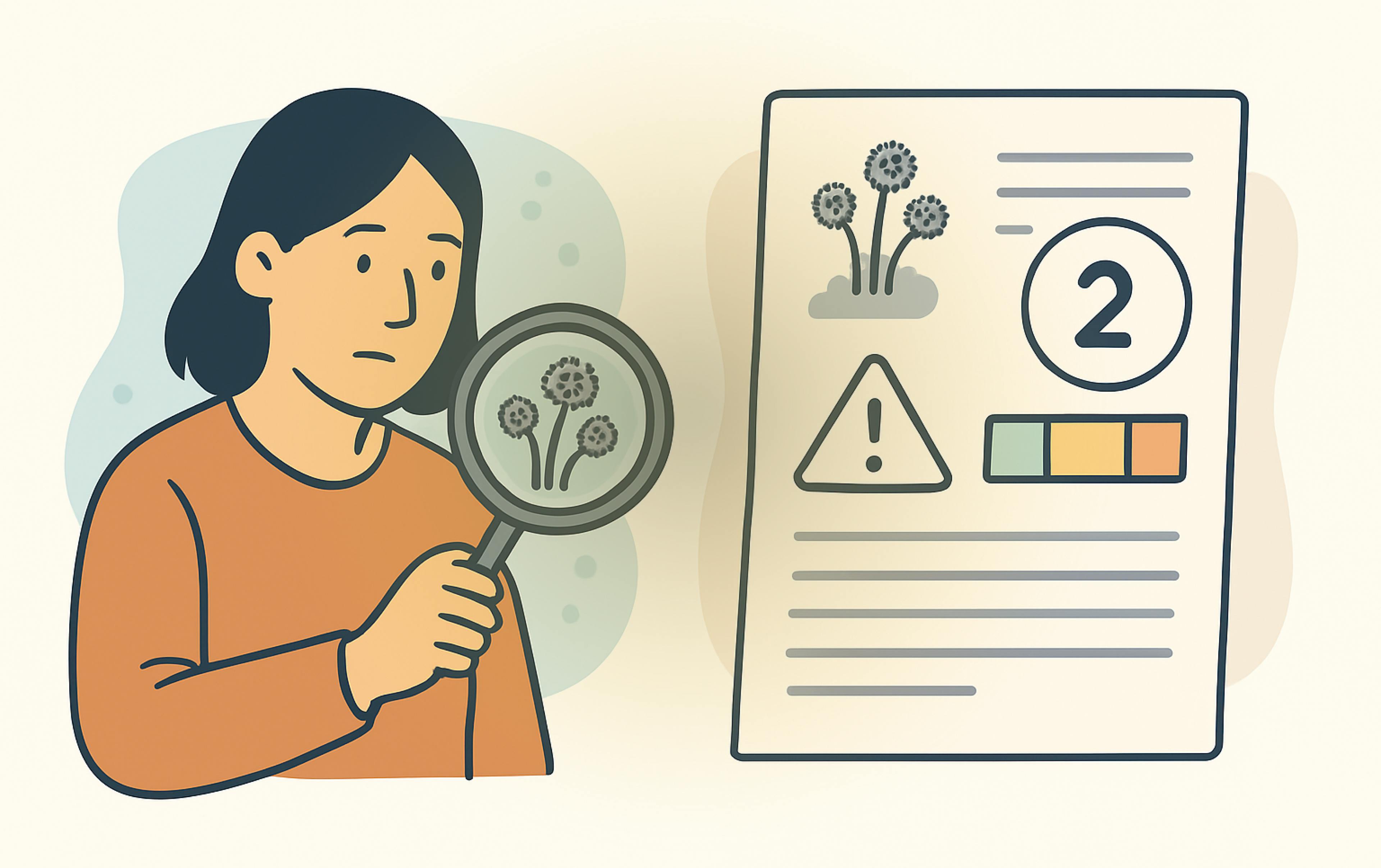ERMI and HERTSMI-2 interpretation: What your mold score really means

Quick Summary / Key Takeaways
- ERMI and HERTSMI-2 are DNA-based dust tests that provide insights into the types and relative amounts of mold in your home, offering a historical snapshot.
- Understanding these scores is key for ERMI and HERTSMI-2 interpretation, helping gauge potential mold burden and health risks, especially concerning CIRS.
- A "good" or "bad" score isn't absolute; results must be contextualized with symptoms, building history, and professional guidance.
- High scores warrant further investigation and consultation with mold-literate professionals.
It seems like everyone's asking: What on earth do these ERMI or HERTSMI-2 scores actually mean for my home and my health? You're definitely not alone in scratching your head over these reports. It’s a really common and important question, so let's decode these tests together.
Unlocking the Code: Making Sense of Your ERMI & HERTSMI-2 Mold Test Results
So, you got your ERMI or HERTSMI-2 report back, and it looks like a secret message only a microbiologist with a decoder ring could decipher? First off, take a breath. It’s totally normal to feel a bit lost. These tests are powerful tools, but understanding your ERMI and HERTSMI-2 interpretation is key to making them useful, not just a source of confusion. Knowing what these scores signify is vital, not just for your property, but for your potential health, especially if you're wondering about CIRS ERMI levels.
The presence of mold isn't just about a musty smell; it can be linked to developing mold-related illnesses that need a specialized approach. These tests help paint a picture of your environment.
What Exactly Are ERMI and HERTSMI-2 Tests?
Before we dive into ERMI HERTSMI-2 interpretation, let's clarify what these tests are:
- ERMI (Environmental Relative Moldiness Index): Developed by the U.S. EPA, the ERMI analyzes settled dust using DNA technology (MSQPCR) to identify and quantify 36 different mold species. These are divided into Group 1 (26 species typically associated with water-damaged buildings) and Group 2 (10 species commonly found indoors). The final ERMI score compares your home's moldiness to a national database. Think of it as a broad historical survey of your home's mold "personality."
- HERTSMI-2 (Health Effects Roster of Type-Specific Formers of Mycotoxins and Inflammagens - Version 2): This test, often favored in Chronic Inflammatory Response Syndrome (CIRS) assessments, focuses on just five specific mold species known for their significant health impacts: Aspergillus penicillioides, Aspergillus versicolor, Chaetomium globosum, Stachybotrys chartarum, and Wallemia sebi. It uses a point system based on the concentrations of these molds.
Both tests analyze settled dust, which can provide a more stable, historical indication of mold types present over time compared to a single air sample.
Cracking the ERMI Score
When it comes to understanding ERMI results, the score is calculated by subtracting the sum of the logs of Group 2 molds from the sum of the logs of Group 1 molds.
- The Scale: ERMI scores typically range from around -10 (low moldiness) to +20 (high moldiness).
- General Interpretation:
- < 0 to 2: Often considered lower mold burden.
- 2 to 5: May indicate some level of concern; context is key.
- > 5: Suggests a higher mold burden, often associated with the upper 25% of homes in the EPA study. A high ERMI score usually involves further investigation by a professional.
- For CIRS patients: Some practitioners prefer a score of 2 or less, or even negative values, for a truly "safe" environment.
Understanding Your HERTSMI-2 Score
The HERTSMI-2 score is simpler to calculate:
- Points System: Specific concentrations of the five target molds are assigned points. These points are summed for a total score.
- General Interpretation:
- ≤ 10: Often considered relatively safe for individuals with CIRS to occupy or re-occupy after remediation. This is often seen as a good HERTSMI-2 score.
- 11-15: Borderline. Caution and potential further cleaning or investigation are advised.
- > 15: Indicates a potentially significant mold issue, generally considered unsafe for CIRS-sensitive individuals without remediation.
Why Your Score Isn't the Whole Story
A crucial part of ERMI HERTSMI-2 interpretation is knowing that these scores are data points, not definitive diagnoses for your home or your health.
- Context is King: A high score strongly suggests a history of or current water damage and mold growth, but it doesn't tell you where the mold is or if it's currently active.
- Individual Sensitivity: Your genetic makeup, overall health, and duration of exposure play huge roles. One person might react severely to a moderate score, while another feels fine with a higher one. This is particularly true for those with CIRS.
- Professional Guidance Needed: These scores are best interpreted by a qualified Indoor Environmental Professional (IEP) who can assess the building and a knowledgeable healthcare provider who can correlate the findings with your health symptoms.
The presence of these molds and their toxins can contribute to the development of complex health issues. It's not just about a "number"; it's about understanding potential risks.
Actionable Steps After Getting Your Results:
- Don't DIY Diagnosis: Avoid drawing definitive conclusions or starting major remediation based solely on a score.
- Consult a Professional: Share your report with a mold-literate doctor (especially one familiar with CIRS) and a certified IEP. They can help you understand what the score means in your specific situation.
- Investigate Sources: If scores are elevated, an IEP can help identify moisture sources and the extent of contamination, guiding any necessary remediation.
Overwhelmed by Your ERMI or HERTSMI-2 Report? MoldCo Provides Clarity.
If your ERMI or HERTSMI-2 results have left you with more questions than answers, you're not alone. Understanding these complex reports and what they mean for your health and home requires expertise. MoldCo's clinicians are trained to interpret these findings in the context of your unique health situation, helping you connect the dots between your environment and your well-being. We can guide you on the next steps toward a healthier life.